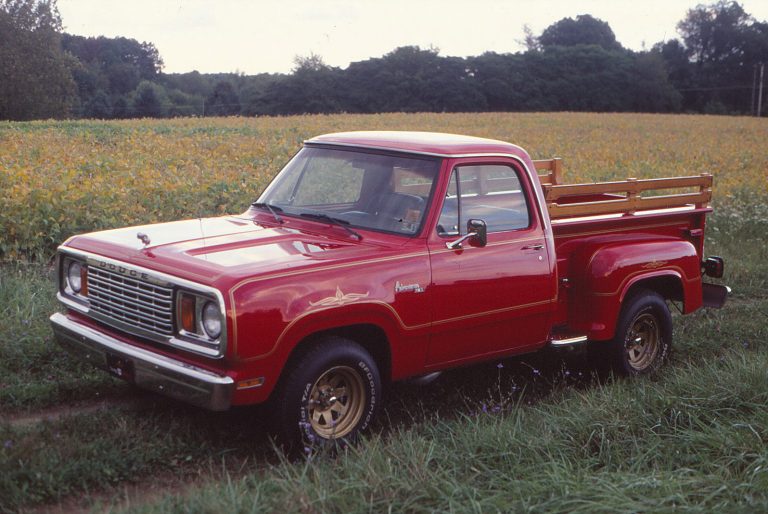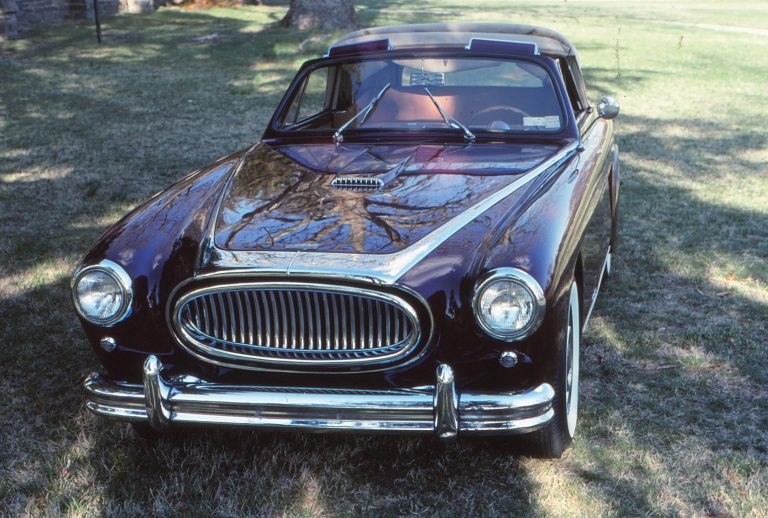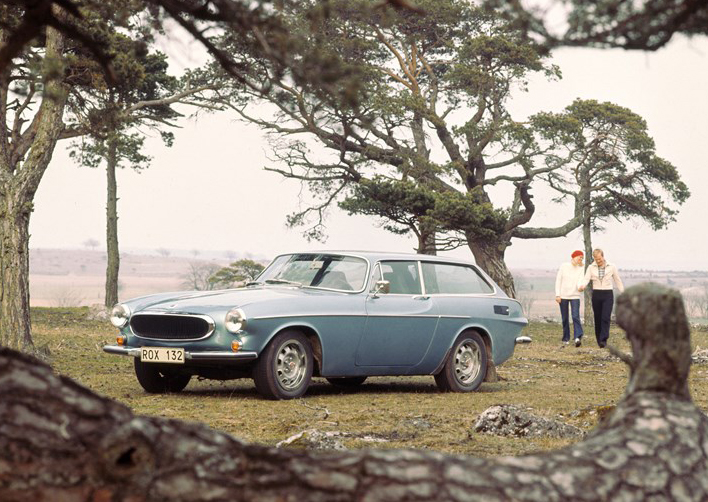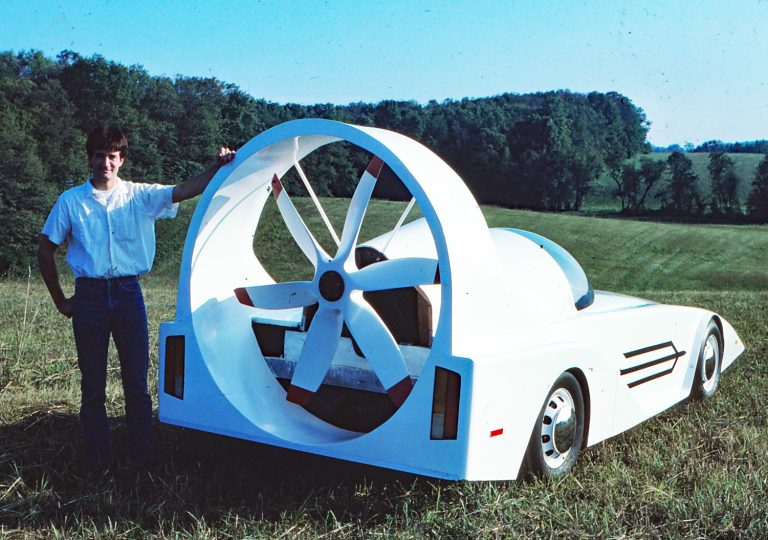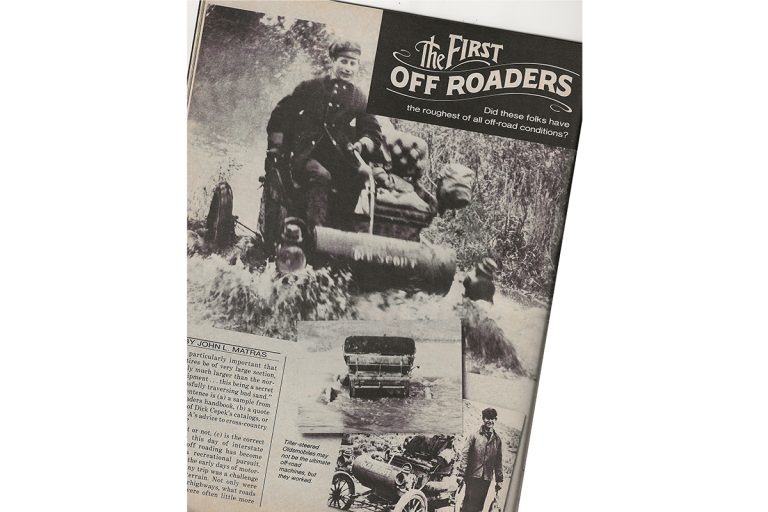History/driving impressions originally published in AutoWeek January 15, 1990; republished by the author
Crank the steering wheel around at least a couple of times, gingerly let out the heavy clutch and edge up the revs just a bit. The big V-8 chuffles and the car edges forward and around, out onto the narrow two-lane blacktop road. With all that lock in the steering system, there is no choice but to let the wheel slide through my hands. With more caster than a shopping cart, the front wheels find straight ahead all by themselves and, whadya know, we’re underway.
This is the Dart GTS and by its bumblebee stripes shall you know it. A full-fledged member of the Dodge Scat Pack, the GTSport was big brother to the Dart GT, coming with everything the GT did and more. Particularly under the hood. The “base” engine for the GTS was the 340 cid V8, stretching Chrysler’s thin-wall small-block V8 for all it’s worth, or the little version of the big block, the 383, while the GT could be ordered with the same engines as before or the new 318 CID V8 producing 230 hp.
Producing horsepower – and converting it into acceleration – was more the milleau of the GTS, however. The 340 pumped out 275 horses, while the 383 was rated at 300, actually a few less than the same engine in a bigger chassis, thanks to the more restrictive exhaust manifolding in the Dart’s limited engine bay. With either engine came a four-barrel carburetor and 2¼-inch dual exhaust and, as a mandatory option, the Rallye Suspension package. Heavy-duty torsion bars (0.88-inch diameter for the 340 GTS, 0.94 for the 383), heavy-duty ball joints, stronger six-leaf rear springs, firmer shocks and a front anti-rollbar were included and were complemented by E70x14 red-striped tires on 14×5.5 steel wheels. “Mag look” wheel covers were optional (our feature car, owned by Rod Wolfe of Allentown, PA, came with dog-dish hubcaps), but buckets were standard on hard tops. With a convertible GTS, a bench was standard (better for cruising with your baby?), buckets optional.
Dodge finally gave up on its own trigger reverse-lock-out shifter, known as the wet noodle, and put a Hurst Competition-Plus linkage and lever with the four-speed. A reverse-engagement warning light presumably would prevent backwards burnouts. The shift lever itself was a stout chromed rod, bent in two places to bring it closer to the driver, and topped with a ball. Shiftless types could order up the Torqueflite automatic and, for someone with an odd sense of humor, the column-mounted three-speed manual transmission was available as standard equipment.
To get a tachometer, the console first had to be specified, because that’s where Chrysler put it. It made about as much sense as wearing a wristwatch on your ankle, but because Chrysler tachs were about as accurate as Russian home-market watches, it didn’t much matter. Serious runners bought aftermarket and mounted them up where they could be seen.
Speaking of being seen, one had a choice in how and how much to advertise the performance status of the GTS: either a “rallye stripe down the side,” the bumblebee stripes around the tail (in white, red, or black), or no stripe at all. Every GTS, however, came with red-and-chrome “GTS” labels, one per side, front and rear, and an “air scoop hood design.” This latter consisted of bulges length-wise in the sheet metal with simulated air intakes, filled with “340 FOUR BARREL” OR “383 FOUR BARREL,” depending on what was beneath.
(Is fair to mention at this point that a limited number – at least 50 for homologation – 440 wedge and 426 Hemi Darts were built for Chrysler in 1968. These were bare-bones strippers without even a back seat but capable of running 10s in the quarter-mile when properly set up. In ‘69, some 600 Darts were built with the 440, basically the same as the 383 GTS except for the engine).
In ‘69, Dodge introduced a low-budget performance model, the Dart Swinger 340, listing for less than $2,900, compared to $3,226 for a base model GTS 340. The GTS 383, however, had found another 30 hp for a total of 330 and, at a mere $35.40 over the 340 motor, was one of the biggest bargains on the option list. It had its cost, however. Although one magazine reported that a Torqueflite 383 ran a 14.3-second quarter-mile out of the box (compared to a test in another magazine of a four-speed 340 turning a 14.4-second quarter), the biggest liability of the 383 had to be in turning. The 383 was a significantly heavier lump than 340 (remember the difference in torsion bar sizes), and as a result was less willing to go around corners. That didn’t matter much, perhaps, on a genuine sanctioned dragstrip with adequate runoff, but Darts weren’t known, even with the optional disc/drum brakes, for excellence in braking.
Wolfe’s 69 GTS 383 suffers from timing retarded against preignition, modern unleaded premium inadequate in those wedge chambers, and Wolfe is understandably reluctant to experiment with potions potentially toxic as an illegal landfill. It still pulls, but not like the old days, he says. And he should know, as he was original owner, trading it for a Corolla in 1972 because the Dodge was too expensive to commute in, then buying it back a few years ago partially restored and finishing the job.
The ‘69 GTS 383 now stands as one high-water mark of straight-line performance. With a new pony car, the Challenger, to hustle in 1970, Dodge dropped the Dart GT and GTS. The performance image of the Dart would fade faster than a winter sunset as insurance costs, smog tuning and fuel crises brought an end to the age of musclecar and the beginning of the influx of the Japanese car to the American market. It seems like the “S” in GTS should stand not for “Sport” but “Sayonara.”
Addendum: How times change. Alloy wheels are now almost ubiquitous on anything but the most basic models, yet wheel covers or even dog dish hubcaps were all that were offered on even the top trim of the Dart.
Alas, as was true in the days of print magazines, space is the final frontier, and it left most of the performance driving impressions on the cutting room floor.






